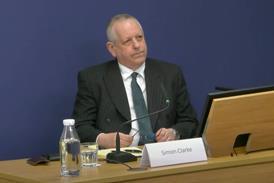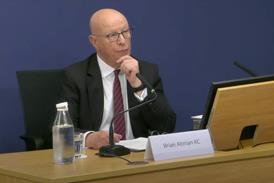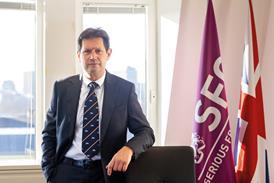While the battle for galactic supremacy may have died down a long, long time ago, the struggle over merchandising rights continues. On a different stellar note, but of equal importance to the world of intellectual property, European guidance has been produced for online hosting services and monitoring for IP infringements.
Two significant judgments in relation to IP have been given recently: L’Oréal v eBay in the European Court of Justice; and Lucasfilm v Ainsworth in the Supreme Court.
L’Oréal v eBay
Several years ago, L’Oréal took action against eBay and several of its users for infringement of its trademarks. The case was interesting in that the goods in question were, on the whole, genuinely produced by L’Oréal, but were being sold (L’Oréal alleged) in contravention of European trademark rules.
In 2009, the High Court referred several questions to the ECJ in connection with the claim. The arguments centred around several matters, some concerning the individual sellers’ liability and others concerning eBay’s liability, and lead to a number of issues for consideration by the ECJ. Some of the guidance provided by the ECJ is far from controversial.
But other parts, particularly concerning eBay’s future responsibilities, appear to have raised a few eyebrows.
(a) Sellers located outside the EEA
Some sellers located outside the European Economic Area (EEA) had used eBay to offer to sell L’Oréal products to customers within the EEA. Could the mere ‘offer’ for sale constitute trademark infringement; or could the sellers escape liability by virtue of the fact that they were outside the EEA (and so the goods had not been ‘offered for sale’ within the EEA)?
This was a classic ‘parallel importing’ case, except that, for current purposes, the ‘importing’ had not yet taken place – all that had happened was that the seller had ‘offered’ to sell the product.
The ECJ thought that this was enough to constitute infringement. The Trade Marks Act 1994 (the 1994 act), and the European legislation on which it is based, states that the offer for sale is an infringing act. The location of the goods at the time of the offer is not relevant. What is relevant is the location of the offer. In particular, in order to infringe, it must be clear that the offer is targeted at consumers within the EEA.
Whether or not that is the case is a question of fact to be decided on a case-by-case basis. The ECJ suggested that it was the case here, where offers were made through ‘www.ebay.co.uk’.
(b) Sale of ‘tester’ products
Some sellers had used eBay to sell L’Oréal products which, while genuinely produced by L’Oréal, were supplied to its distributors as ‘testers’ or otherwise ‘not for sale’. Did this constitute trademark infringement?
Or had L’Oréal’s rights been exhausted because the goods had been placed on the market (within the meaning of section 12(1) of the 1994 act)? On this point the ECJ referred to its earlier judgments in Silberquelle (Case C-495/07) and Coty Prestige Lancaster Group (Case C-127/09).
L’Oréal had not intended to penetrate the market with the testers and so they had not been ‘put on the market’. L’Oréal’s trademark rights had therefore not been exhausted, and so there could be infringement.
(c) Sales without original packaging
Sellers had also used eBay to sell genuine L’Oréal products without their original packaging. Could this constitute trademark infringement because of, for example, its effect on the brand reputation? This question also related to the exhaustion of L’Oréal’s rights, but more particularly with the exception where there exist legitimate reasons for opposing the further sale of the products (despite the fact that they have already been put on the market by L’Oréal) under section 12(2) of the 1994 act.
Three issues were raised on this point.
First, the ECJ decided that, if the sale of the products without packaging harmed the image of the products, and therefore harmed the reputation of the mark, then this could infringe the trademark. It is for the courts to decide on a case-by-case basis whether this is the case.
The ECJ noted the Advocate General’s observations that, in some cases, removal of the packaging can harm the product’s image, while in other cases it might actually improve it, depending on the circumstances.Second, where the packaging displayed the identity of the manufacturer or the person marketing the product, then the trademark’s function of indicating origin is impaired, and so this may be another ground for infringement.
This argument perhaps leaves something to be desired. If the removal of information identifying the manufacturer/marketer means that the consumer cannot identify the product’s origin, that would suggest that the guarantee of origin is provided by that body of information, and not by the trademark itself. The removal of that information does not appear to affect the function of the trademark.
Third, the ECJ held that criminal offences concerning failures to provide information in respect of cosmetic products (for example, manufacturer, ingredients, use-by-date, and so on, which were usually displayed on the packaging) are irrelevant for the purposes of trademark law (contrary to L’Oréal’s arguments).
(d) eBay’s Google adwords
eBay had purchased several Google adwords in respect of the L’Oréal products sold by its users. Did this constitute trademark infringement? Or could eBay escape liability because this was not ‘use’ of the trademark in relation to the relevant goods?
The ECJ referred to its recent decisions in the Google cases (Joined Cases C-236/08 to C-238/08) and distinguished between the different uses to which eBay might put these adwords. If eBay uses adwords comprising L’Oréal’s trademarks in relation to its own services, for instance the provision of an online marketplace, then there is unlikely to be ‘use’ of the marks in relation to goods or services that are the same as, or similar to, those for which the marks are registered.
L’Oréal’s marks were generally registered in respect of ‘cosmetic goods’ and so on: something very different from an ‘online marketplace’. However, where eBay links those adwords directly to offers for sale of genuine or otherwise L’Oréal products, then the ‘use’ is made in relation to the relevant goods or services. The ECJ made it clear that eBay might infringe even though the adwords are not used in relation to its own goods or services, but instead referring to another’s goods or services, for instance the sellers who trade through eBay’s website.
(e) Who uses the trademarks?
The advertising for sale of L’Oréal products through the eBay website inevitably entailed some use of L’Oréal’s trademarks on the website itself. Did this constitute ‘use’ of the trademark by eBay (either instead of, or as well as, the individual seller)?
For these purposes, the ECJ held that eBay did not ‘use’ the trademarks in the same way as the sellers did. It was doing no more than providing a service through which third parties (the sellers) could use the marks, and this was, in effect, no different to Google providing a service whereby its customers could purchase an adword containing a third-party trademark.
(f) eBay’s liability in providing a ‘hosting’ service
Article 14 of the e-Commerce Directive (Directive EC 2000/31/EC) states that, where a service provider of an information hosting service would otherwise be liable for trademark infringement or any similar liability, it is not liable for damages if it does not have actual knowledge of the unlawful activity or, upon obtaining such knowledge, acts expeditiously to remove or disable access to the hosted information. Where eBay might otherwise be liable for infringement, could it rely on this protection?This was another question of fact for the courts to decide on a case-by-case basis.
The ECJ suggested that there might be two distinct scenarios for the High Court to consider. eBay may be providing a neutral intermediary hosting service in relation to the sellers’ product offerings, insofar as it merely stores information relating to the seller and the products.
On the other hand, eBay might be doing something more. It might also take an active role in optimising the presentation or promotion of particular offers for sale in such a way that it must have full knowledge of the details in question, and so might not be protected.
(g) Injunctions to prevent future infringements
Could L’Oréal obtain an injunction against eBay, not just in respect of restraining the specific infringements identified, but also requiring eBay to take further steps (and, if so, what) to prevent infringements generally?
The thrust of this question was not to guard against continued infringements by the same individual sellers, but to require eBay to change its policies and procedures on a more general basis to minimise the possibility of other sellers infringing L’Oréal’s (or any other third party’s) trademarks.
The ECJ gave a resounding ‘yes’ to this question. It reaffirmed that member states should ensure effective protection of intellectual property, and that this includes the ability to require service providers to take steps to prevent future infringements.As to the steps that service providers such as eBay must take, the ECJ confirmed that it is not required to actively monitor all data that passes through its service, as this would not be fair or proportionate and could be excessively costly.
Equally, there cannot be an absolute ban on the sale of goods bearing the trademark in question, as this may impinge on legitimate sales. However, the service must make it possible to identify its users so that, if and when any infringement is found, the perpetrator can be found just as easily.
Perhaps unfortunately, for both L’Oréal and eBay, the ECJ did not provide examples of the specific steps that might be required. But this was probably the correct decision to take, given that those steps must be effective, as well as fair and proportionate, in the immediate context – something which the High Court may be better placed to assess on the facts.
Lucasfilm v Ainsworth
In the final instalment of what appears to have become a familiar trilogy (at least in the IP universe), Lucasfilm and Andrew Ainsworth have reprised their roles. The battle concerns Mr Ainsworth’s production of replica ‘stormtrooper’ helmets made famous throughout the Star Wars films. Mr Ainsworth was closely involved in the development and manufacture of the helmets which were used in the films.
Lucasfilm, named after its founder, George Lucas, was the production company that made the film series and has found significant success in merchandising based on the franchise’s characters and paraphernalia.
The first part of this trilogy took place in the High Court in July 2008. Lucasfilm claimed that Mr Ainsworth’s production and sale of the replica helmets was a breach of both its English and US copyrights. It also sought to enforce a default judgment of $20m which it had already obtained in California. Mann J held that copyright in the helmet vested in Lucasfilm, and that Mr Ainsworth had substantially copied it in making his replicas.
However, the English copyright claimed was barred by sections 51 and 52 of the Copyright, Designs and Patents Act 1988 (the 1988 Act). In contrast, having decided that the US copyright claim was justiciable in England, Mr Ainsworth had infringed that copyright as there were no equivalent exceptions. Finally, the US default judgment was unenforceable in England because the US courts did not have personal jurisdiction over Mr Ainsworth.
The second instalment came in the Court of Appeal in December 2009. That Court upheld the first instance decisions in respect of the ownership of copyright, the English copyright infringement claim, and the unenforceability of the US default judgment. However, it reversed the decision on the question of infringing US copyright, on the basis that it was not justiciable in the English courts.
Now, the third and final instalment at the Supreme Court towards the end of July 2011. Only two issues remained for the Court to consider: (a) whether the helmet was a ‘sculpture’ for the purposes of the 1988 act and, therefore, outside the ambit of sections 51 and 52, ultimately meaning that the infringement claim was not barred; and (b) whether the claim for infringement of US copyright was justiciable in the English courts.
Designs excluded from copyright infringement
As regards the section 51/52 exclusions, much of the argument came down to the distinction between works of art and functional items and whether the helmet was a ‘sculpture’.
Lucasfilm argued that the helmet was wholly artistic, and had no practical function at all. They laughed off suggestions that the helmets were actually intended for use in an inter-planetary war, instead insisting that their sole purpose was to make a visual impression on filmgoers.
At first instance, Mann J saw it serving a dual purpose, a mixture of costume and prop, but in any event something whose primary function was utilitarian. Similarly, in the Court of Appeal, Jacob LJ had described the helmets as being recognisable as helmets and, fundamentally, each one performing the usual function of a helmet albeit within the confines of a fictional film.The Supreme Court agreed.
The court compared the Star Wars films with historical war films which, while having varying degrees of fiction, sought to portray reality by showing soldiers wearing the same uniforms and helmets as real-life soldiers had done. There could be no suggestion that those helmets were ‘sculptures’ or works of art because they were utilitarian in the sense of being part of the production of the film. Precisely the same reasoning applied to the stormtrooper helmets.
Accordingly, the helmets fell to be regarded as design models or industrial reproductions, and therefore Lucasfilm’s claim for infringement of English copyright was barred by sections 51 and 52 of the 1988 Act.
So, celebrations all round for Mr Ainsworth and his rebellion. Cue dancing ewoks.
The US copyright question
But that is not quite the whole story. As with any Star Wars debate, attention inevitably (and perhaps unhappily for some) turns to the prequels – in this case, the US copyright. The High Court and the Court of Appeal had already refused to enforce the US default judgment, and no further point was taken on that in the Supreme Court.
However, the claim for infringement of the US copyright remained a live issue.
It is perhaps worth detailing the history on this point (not least because - spoiler alert! - the Court of Appeal had reversed the High Court’s decision, only for the Supreme Court to reinstate it).
In the High Court, Mr Ainsworth argued that a line of cases starting with the rule in Moçambique [1893] AC 602 meant that the English courts could not hear the US copyright claim. In Moçambique, the House of Lords had held that it did not have jurisdiction to decide on a claim for trespass of land situated abroad, because that land was something entirely within the foreign sovereign state’s ambit.
The same rule was applied to the validity and infringement of a foreign patent by the High Court of Australia on the basis that the grant of the patent was a sovereign act of a foreign State (Potter v Broken Hill Pty Co Ltd [1906] 3 CLR 479). Following a line of several other cases, this was also applied to copyright infringement claims in Tyburn Productions v Conan Doyle [1991] Ch 75. Insofar as it concerned questions of infringement of copyright, rather than subsistence, the Tyburn decision was distinguished by the Court of Appeal in Pearce v Ove Arup [2000] Ch 403.
However, the Court did not expressly overrule it because they did not consider it necessary to do so where (for instance, in Pearce) the question of validity did not arise.
Following Pearce, the High Court decided that it was entitled to deal with Lucasfilm’s US copyright claim, and felt that it should do so since, unlike a registered right such as a patent, each particular instance of copyright was not created by the act of a foreign state through registration and grant.
The judge felt that, if it were not so, then Lucasfilm would have no effective route to take action against Mr Ainsworth, who had refused to submit to the US jurisdiction.
It being common ground that copyright subsisted and the judge having already found that it was owned by Lucasfilm and had been copied, it was a short step to find that Mr Ainsworth had infringed Lucasfilm’s copyright.
Mr Ainsworth appealed. The Court of Appeal reviewed the same line of cases but distinguished Pearce on the basis that it was limited to matters solely within the EU and subject to the Brussels Convention (for instance, the 1968 Convention on jurisdiction). The Court decided that it was therefore entitled to reach its own conclusion on justiciability, and went on to decide that the US copyright claim could not be heard in the English courts.
Among other things, the Court relied on the Moçambique rule, the clash of jurisdictions having differing IP policies, concerns regarding forum shopping and, in its view, the distinction between cases which did and did not address validity was artificial (since any question of infringement naturally assumes that the right in question is valid).
Now it was Lucasfilm’s turn to appeal, and with success. The Supreme Court wholly rejected the Court of Appeal’s view. It came to the conclusion that the Moçambique rule had been sufficiently eroded by subsequent cases and statute to the effect that it hardly had any application at all, except in relation to questions of title or possession of land.
The Court could see how it might be applied to the validity of patents (as in Potter v Broken Hill), but not to unregistered rights such as copyright. On this point, the Court expressly overruled Tyburn. Where political issues arose, as identified by the Court of Appeal, these could be addressed on a case-by-case policy basis.
Going further, the Court observed that the modern trend was in favour of this decision. It referred to the Brussels I Regulation (44/2001/EC), which laid down the general principle that any tortious claim should be heard by the courts of the defendant’s jurisdiction but, by contrast, questions of the validity of registered rights were the exclusive domain of the registry’s jurisdiction. It also referred to the Rome II Regulation (864/2007/EC), which plainly envisaged a court applying the law of another jurisdiction (whether or not within the EU) in relation to infringement of intellectual property.
Accordingly, the High Court’s original judgment was reinstated. For Lucasfilm and Mr Ainsworth, this might mean yet another chance to reprise their roles as they now have to move on to the consequences and remedies for that infringement.
For everyone else, some observers have said that the judgment on the US copyright will open the floodgates for foreign claims to be heard in England, particularly where the US courts do not have personal jurisdiction. But that is nothing new, at least in relation to torts generally (see the rules under the Rome II Regulation, Part III of the Private International Law (Miscellaneous Provisions) Act 1995 and their common law predecessors).
In the Supreme Court’s view, there seems to be little reason why copyright should be any different.
It might also be said that Mr Ainsworth is being held liable for doing something lawful in the UK, but that is not quite correct. As far as what he did concerns the UK, Lucasfilm’s claim failed at every instance (and rightly so it would seem). What Mr Ainsworth is liable for is the extent to which his activities took place in the US. Although he may not have been physically present in the US, he sold and shipped directly to customers in the US.
This is an important point to take away and could have significant repercussions particularly for online traders. Arguably, the onus is now on them to be comfortable that they can comply with the IP laws of each and every jurisdiction into which they sell. What will also be interesting to see is how, if at all, the decision translates into the patent world, especially in the circumstances of, for example, Primus v Roche (Case C-539/03).
Perhaps, a long time ago in a galaxy far, far away, if the empire had managed to secure copyright in the plans for the death star, the English courts could have helped them out.
Jim McDonnell, DLA Piper

























No comments yet